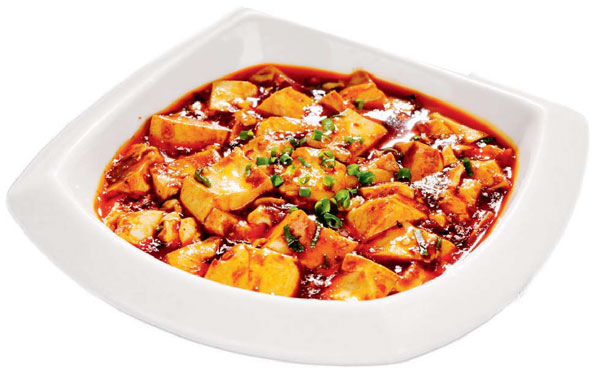The making of mapo tofu
The delectable delight that originated from a pock-faced woman in the 1800s
Sour, sweet, bitter, spicy and salty make up the 五味 (wǔwèi) - the five basic flavors - and combinations of these flavors create culinary magic the world over. But sometimes an obsession with a single flavor can have a unique charm.
Sichuan food, one of the eight major Chinese cuisines, enjoys a vaunted reputation at home and abroad for its dedication to spiciness. Most Sichuan food involves a great deal of preparation and experience, but let's face it, if you really want the authentic flavor, the best way to get it is with mapo tofu (麻婆豆腐).
Primarily based on Chengdu and Chongqing dishes, Sichuan cuisine focuses on the refined selection of raw materials, proportions, presentation, and a sharp contrast of taste and color. Sichuan dishes traditionally concentrate on peppers, prickly ash peels and ginger, so if you are a fan of heavy flavors and have an urge to challenge your taste buds, Sichuan food - and mapo tofu in particular - is the choice for you.
Tofu enjoys a history of more than 2,000 years in China - high in protein and calcium, low in cholesterol and fat. Bean curd tofu is made in a variety of ways, and mapo tofu is soft and set in a spicy chili and bean sauce (the sauce itself is typically thin, oily and red hot) and often topped with minced meat. To describe authentic mapo tofu, you will use seven special characters: 麻 (má, numbing), 辣 (là, spicy), 烫 (tàng, hot), 鲜 (xiān, fresh), 嫩 (nèn, tender), 香 (xiāng, aromatic) and 酥 (sū, flaky).
You can find mapo tofu in restaurants all over China, but it's hard to get that authentic, Sichuan flavor just right, especially considering most adapt the recipe to their local area with the numbing and spiciness toned down. After all, not everyone can handle true Sichuan flavor.
The origin of mapo tofu can be traced to 1862 during the Qing Dynasty (1644-1911) and to a couple surnamed Chen, who ran Chen Xingsheng Restaurant, a small eatery near Wanfu Bridge in north Chengdu. Unpleasantly, the mapo comes from the pock-marked face of Mrs Chen - ma meaning pock, po meaning elderly woman. Oil porters crossing the bridge would use their stock to save money and ask the Chen restaurant to make them something nice.
Chen Mapo, as she came to be known, had her own unique way of cooking tofu, famous for its pleasant look, smell and taste. Chengdu Records, published in 1909, shows the restaurant's name was eventually changed to Chen Mapo Tofu Restaurant and listed as one of the 23 most famous restaurants in Chengdu in the late Qing Dynasty. Its flavor, price and suitability with rice meant mapo tofu became a Chinese food staple, spreading nationwide.
The best philosophy for mapo tofu is: The simpler, the better. Even though the ingredients are cheap, mapo tofu is seen as a test of any aspiring chef's skills.
Courtesy of The World of Chinese, www.theworldofchinese.com
The World of Chinese



















